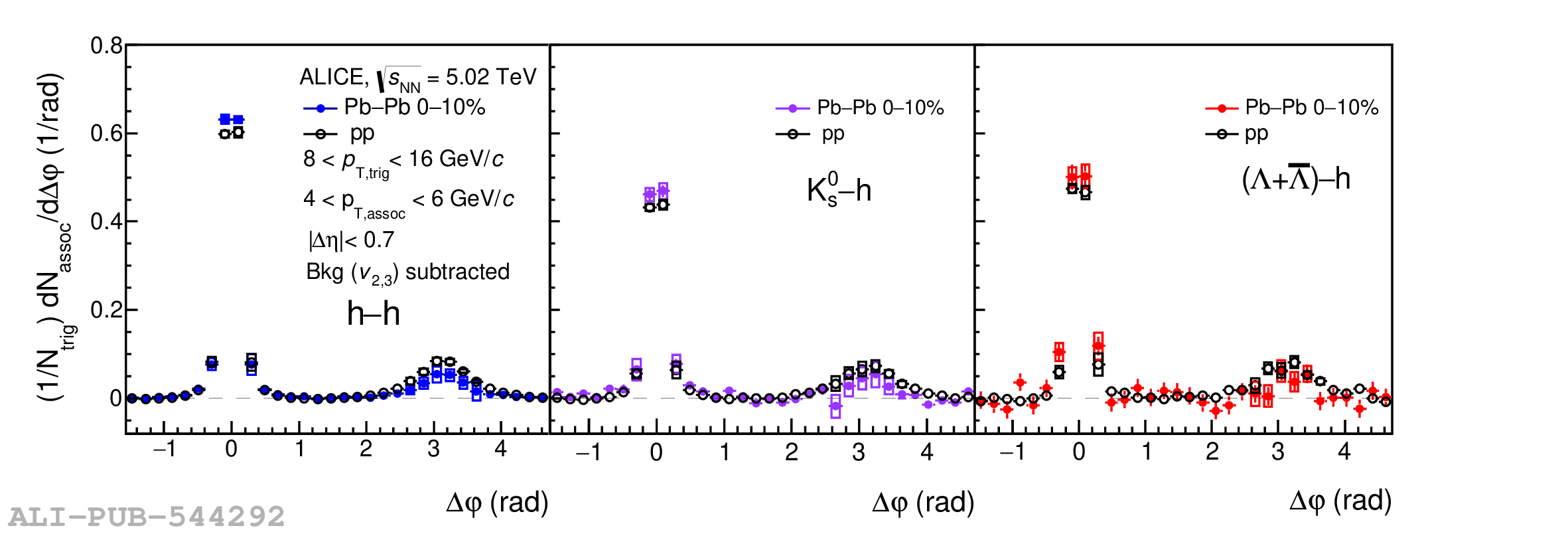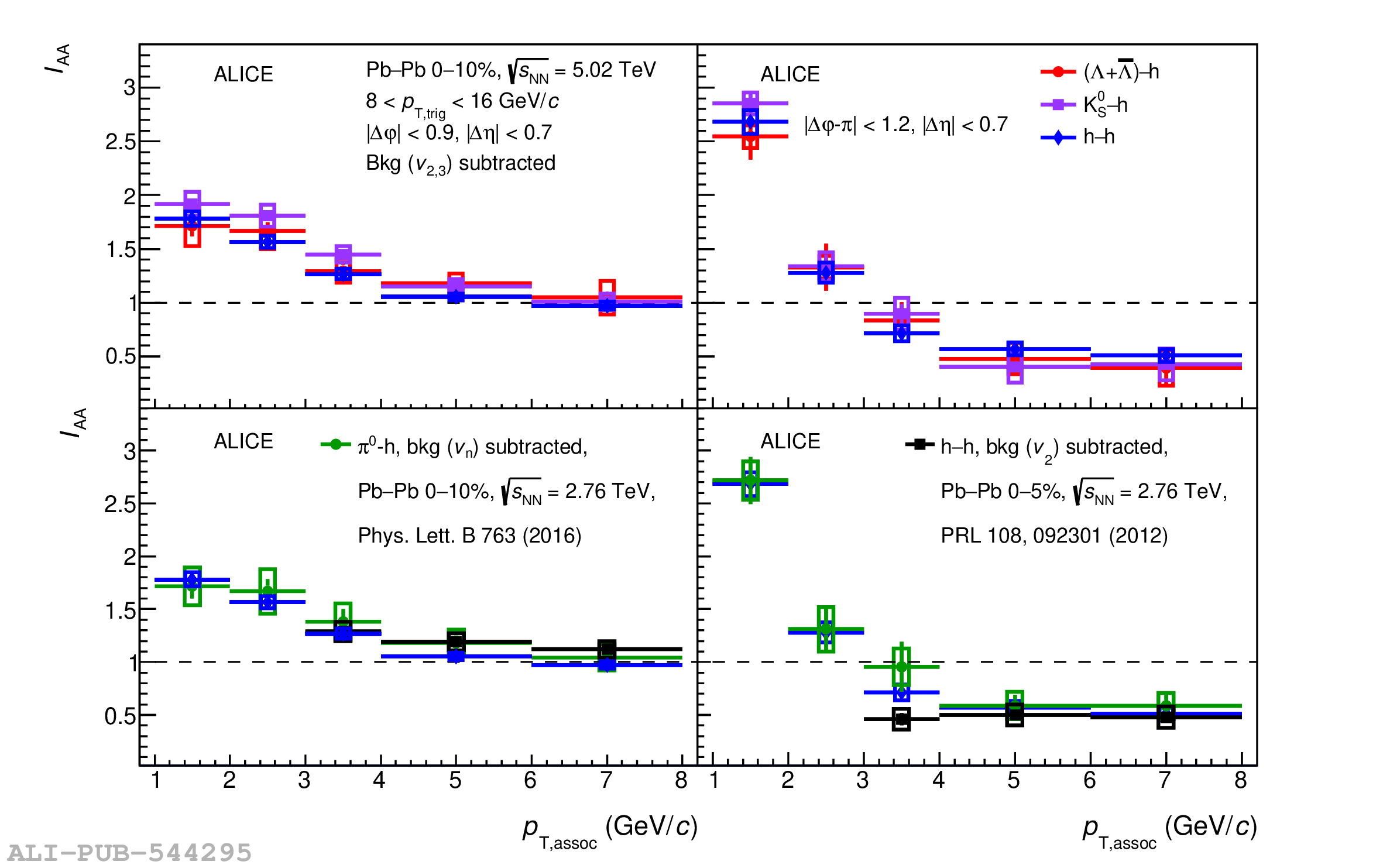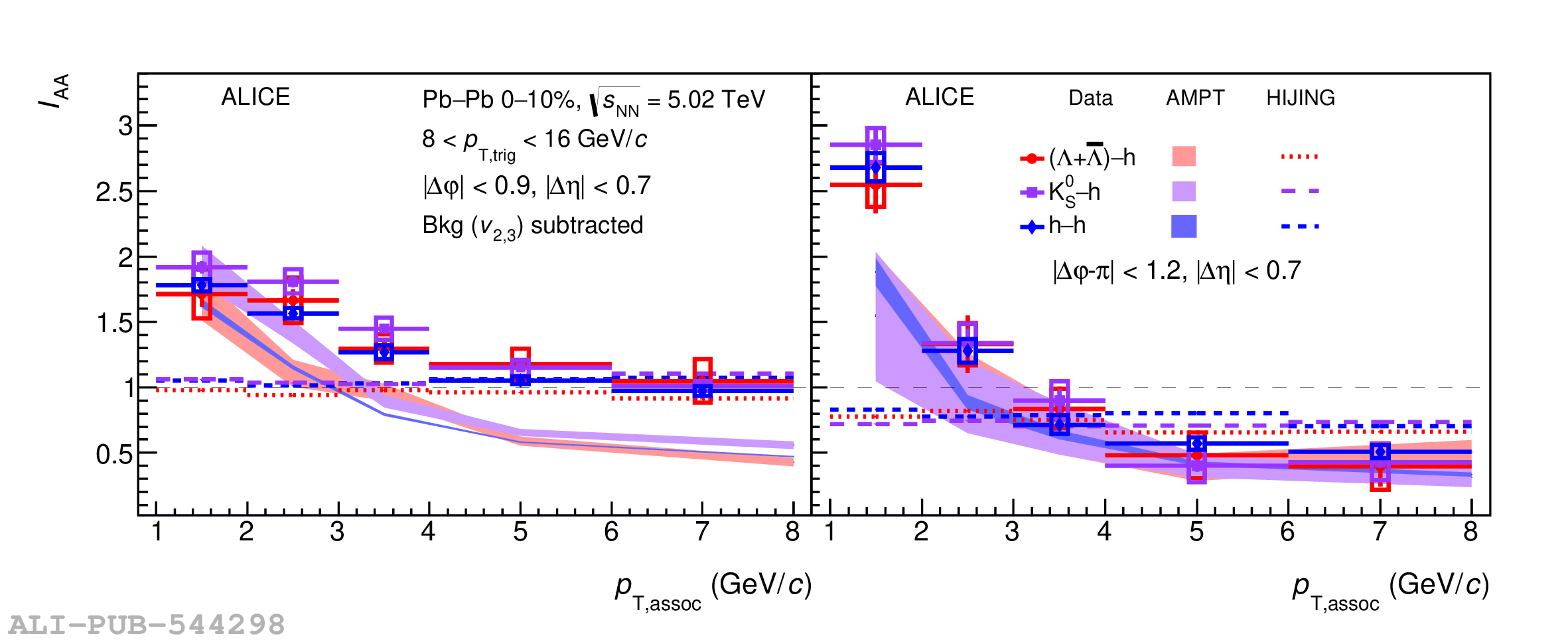Two-particle correlations with ${\rm K}^{0}_{\rm{S}}$, $\Lambda$/$\bar{\Lambda}$, and charged hadrons as trigger particles in the transverse momentum range $8 <~ p_\mathrm{T,trig}<~16$ GeV/$c$, and associated charged particles within $1 <~ p_\mathrm{T,assoc}<~8$ GeV/$c$, are studied at mid-rapidity in pp and central Pb-Pb collisions at a centre-of-mass energy per nucleon-nucleon collision $\sqrt{s_{\mathrm{NN}}} = 5.02$ TeV with the ALICE detector at the LHC. After subtracting the contributions of the flow background, the per-trigger yields are extracted on both the near and away sides, and the ratio in Pb-Pb collisions with respect to pp collisions ($I_{\mathrm {AA}}$) is computed. The per-trigger yield in Pb-Pb collisions on the away side is strongly suppressed to the level of $I_{\mathrm {AA}} \approx 0.6$ for $p_\mathrm{T,assoc}>3$ GeV/$c$ as expected from strong in-medium energy loss, while an enhancement develops at low $p_\mathrm{T,assoc}$ on both the near and away sides, reaching $I_{\mathrm {AA}} \approx 1.8$ and $2.7$ respectively. These findings are in good agreement with previous ALICE measurements from two-particle correlations triggered by neutral pions ($\pi^{0}$-h) and charged hadrons (h-h) in Pb-Pb collisions at $\sqrt{s_{\mathrm{NN}}} = 2.76$ TeV. Moreover, the correlations with ${\rm K}^{0}_{\rm{S}}$ mesons and $\Lambda$/$\bar{\Lambda}$ baryons as trigger particles are compared to those of inclusive charged hadrons. The results are compared with the predictions of Monte Carlo models.
Eur. Phys. J. C 83 (2023) 497
HEP Data
e-Print: arXiv:2211.01197 | PDF | inSPIRE
CERN-EP-2022-225
Figure group





